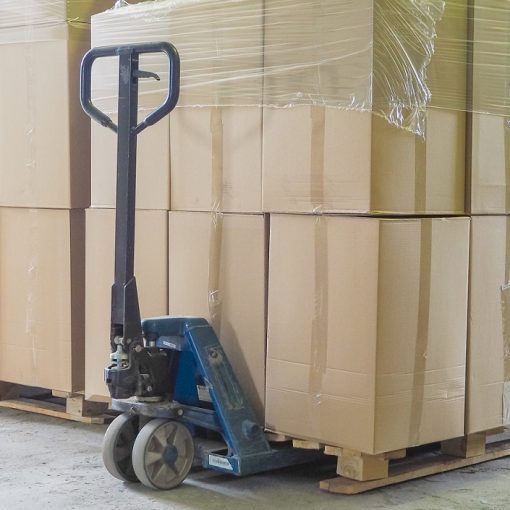Establishing a Logical Packing System
Every efficient storage setup begins with a logical packing system. Firstly, group items based on use, location, or frequency of access. For instance, seasonal decorations should be kept separate from archived documents or household tools. Secondly, avoid mixing unrelated items within one box, as this only complicates retrieval later.
Once items are grouped, assign each box a unique identifier. That is to say, label boxes with a code or number that connects to a detailed inventory list. A simple spreadsheet can track each box and its full contents. This foundational system eliminates confusion, especially when retrieving specific items months later.
Prioritizing Legible and Durable Labeling
Temporary labels fade, smudge, or peel in storage environments. Therefore, use waterproof markers and durable labels or adhesive pouches. Label all sides of each box to maintain visibility regardless of placement. Avoid handwriting directly on cardboard unless markers are smudge-proof.
In addition, printed labels enhance consistency across larger inventories. For example, commercial clients using storage near me often rely on pre-designed templates that include box number, contents, and category. As a result, labels remain intact and readable for extended periods.
Avoiding Vague Descriptions on Labels
Labels should be specific and descriptive. In other words, avoid terms like “Miscellaneous” or “Stuff.” Instead, write “Kitchen – Mixing Bowls, Blender, Cutlery” or “Office – Printer Ink, USB Cables, Receipts.” Specificity saves time and prevents unnecessary opening of multiple boxes.
Moreover, a consistent format improves clarity. For instance, using “Room – Contents – Date” allows anyone referencing the box to understand its purpose quickly. This becomes particularly useful in shared storage arrangements.
Using Digital Inventory Lists for Accuracy
Tracking box contents digitally ensures higher organization. Create an inventory spreadsheet or use inventory apps that allow linking box numbers to detailed item lists. Consequently, you can locate a needed item without physically opening boxes.
Each box number on the spreadsheet should correspond to its physical label. For example, Box 14 could be listed as: “Bedroom – Books, Lamp, Curtains – July 2025.” If anything is added or removed, update the sheet immediately. This method supports organized transitions, especially during long-term storage.
Implementing Color Coding by Category
Color coding adds a quick visual reference. Assign colors to each category: red for holiday items, green for kitchenware, blue for documents. As a result, identifying and grouping similar boxes inside the unit becomes easier.
This technique also reduces reliance on reading each label during retrieval. For instance, scanning a unit with color-coded labels allows faster navigation, particularly for frequent access items.
Labeling Multiple Sides for Accessibility
Storage often requires stacking and tight placement. Therefore, label at least three sides of each box. Labeling only the top becomes problematic when boxes are stacked, making content identification difficult.
Furthermore, placing labels toward the upper third of each side ensures they remain visible, even when stacked or tucked against walls. This strategy reduces the time spent rotating or shifting boxes during item retrieval.
Including Handling Instructions Where Necessary
Certain boxes require caution. Clearly indicate if the box contains fragile items, electronics, or perishable materials. That is to say, label such boxes with clear warnings such as “Fragile,” “Handle with Care,” or “Temperature Sensitive.”
These notes help prevent accidental damage during transport or when shifting contents within the storage unit. Such warnings should appear alongside regular labeling details to avoid confusion.
Using Consistent Language and Abbreviations
Consistency in label phrasing is essential. For example, if you use “BR” for Bedroom, do so for every box containing bedroom items. Similarly, avoid switching between “Kitchen” and “Kitch.” This inconsistency can cause misplacement or slow down identification.
Create a master key or legend for abbreviations used. Consequently, anyone accessing the storage can decode label information efficiently. This is especially important in cases where multiple people organize or retrieve items from the same storage unit.
Keeping Label Formats Simple and Uncluttered
Overloading a label with information can backfire. Therefore, strike a balance between detail and readability. Use no more than two lines of text, and leave space between sections for quick scanning.
Bullet points or short phrases work better than long sentences. For instance: Box #7 Garage Tools Wrenches, Cables, Safety Glasses
This format is easy to replicate and efficient for visually scanning rows of boxes.
Planning for Rotation or Reuse of Boxes
Storage needs evolve. For boxes likely to be repurposed, use erasable labels or removable adhesive pouches. In addition, you may use masking tape to create a label area and write on top with permanent marker, replacing only the tape when the box contents change.
This method preserves box integrity while allowing for updated information. Such flexibility is useful for families, students, or seasonal businesses rotating stock through a unit.
Positioning High-Use Boxes Strategically
Boxes accessed frequently should be placed at the front and at a reachable height. Labeling helps determine access frequency. Therefore, mark these boxes with tags such as “Frequently Used” or include colored tape for faster identification.
Additionally, avoid placing these boxes under heavier or infrequently accessed items. Strategic positioning prevents unnecessary lifting or rearrangement and minimizes disruption within the unit.
Establishing a Labeling Routine
Labeling should not be an afterthought. Create a habit of labeling boxes immediately after sealing them. In other words, do not stack or store any box without proper labeling first.
To support consistency, prepare all labeling tools in advance. Keep markers, labels, tape, and your inventory list accessible during the packing process. A systemized routine avoids mistakes that lead to wasted time and effort.
Label Review After Storage Placement
After all boxes are placed in the unit, conduct a label review. Walk around the unit and inspect that each label is visible and matches the intended location in your inventory list.
In some cases, repositioning boxes or rewriting labels might be necessary. A final walkthrough ensures the labeling system remains functional and ready for future access.
FAQs
1. What should I include on a box label?
Include a unique identifier (e.g., Box 5), category (e.g., Kitchen), and a list of key contents. Optional fields include packing date or priority notes.
2. How can I organize boxes for easy future access?
Group similar boxes together, label multiple sides, and keep frequently used boxes near the front. Use a digital or paper-based index.
3. Are handwritten labels sufficient for long-term storage?
Only if done with waterproof, smudge-resistant ink and durable labels. Printed labels provide longer-lasting results in most conditions.
4. Is digital labeling worth the effort for home storage?
Yes, especially for complex inventories. A simple spreadsheet or QR-code system enhances tracking and updates.
5. How often should I update labels or inventories?
Immediately after adding or removing items. Delaying updates reduces accuracy and complicates future retrievals.
For tailored assistance and professional self-storage solutions, contact County Hills Storage today.




